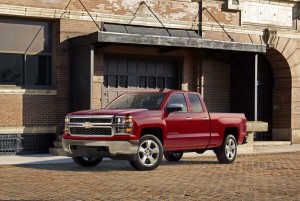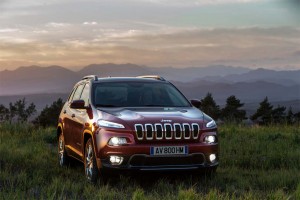
The 2015 Chevrolet Silverado is selling like gangbusters for GM. The maker's truck sales were up 36% in February.
Sales of truck and crossover vehicles accounted for well over half of all vehicles sold in the U.S. during February as sales of passenger cars continued to slide.
Trucks and crossovers accounted for 54% of all vehicles sold in the United States during February, according to AutoData, and the trend was underscored by the sales number posted by various automakers.
General Motors, for example, saw its sale of trucks and utility vehicles increase by 36% but its passenger car sales dropped by 21% and the Cadillac division sales dropped by 12%. The same pattern prevailed at Ford, Honda and Nissan, all of which reported that sales of passenger cars dipped during February but were offset by increases in truck sales.
Toyota and FCA US, however, saw both passenger car and truck and utility vehicle sales increase. Toyota passenger cars sales increased 13% while light truck sales increased 19%. FCA reported a 2.3% increase in car sales and 7% increase in truck sales thanks to the continuing strength of Jeep sales.
Overall, GM, FCA, Audi, Jaguar Land Rover, Hyundai, Nissan, Mercedes-Benz, BMW, Subaru and Mazda reported sales increases for February despite the cold weather across much of the country that made life difficult for dealers. Ford, Volvo and Volkswagen reported modest declines in sales for the month.
“We’re proud that our retailers overcame challenging weather conditions in February and delivered our 39th consecutive month of year over year growth,” said Jeff Walters, senior vice president of sales, Subaru of America, Inc. “With this start to 2015, we are confident Subaru will have another record year in the U.S.”
Reid Bigland, head of FCA US sale noted, “Even with tougher year-over-year sales comparisons in 2015, our vehicle lineup continues to produce record sales results.”
Kurt McNeil, U.S. vice president of U.S. sales operations, said, “Our new SUVs and crossovers, combined with the three-pickup strategy we outlined more than a year ago, are dovetailing perfectly with the growing U.S. economy and a stronger job growth,” McNeil noted.
Toyota, which benefited from its strong position on the West Coast where the adverse weather was less of a factor, posted a 13% increase in sales.
(Automakers enjoy strong February sales despite cold. For more, Click Here.)
“The auto industry is off to its best start since 2007 as truck demand continues to rise,” said Bill Fay, Toyota division group vice president and general manager. “Sales of Toyota light trucks and SUVs, led by RAV4, set a new February record.”
Ford F-Series retail sales increased 7%, as the all-new F-150 remains one of Ford’s fastest-turning vehicles on dealer lots. The training of employees in the new manufacturing process at Kansas City Assembly Plant – the second plant building the new F-150 – is now under way, with production scheduled to begin this month, as planned.
(Click Here for details about Aston Martin’s Geneva surprise: the DBX.)
“Strong customer demand for the all-new F-150 drove strong February F-Series retail sales results in February,” said Mark LaNeve, Ford vice president, U.S. Marketing, Sales and Service.
Mustang sales increased 32% with 8,454 vehicles sold – representing its best February sales since 2007 and making it the best-selling sports car in America since the launch of the all-new model last fall.
TrueCar, the West Coast-based buying service, estimates sales of new cars and light trucks expanded 8.5% last month, reaching the best February volume since 2002. The average transaction price for light vehicles was $32,245, up 2.8% over a year ago, while average incentive spending per unit decreased by $79 to $2,623. The ratio of incentive spending to ATP was 8.1%, contracting from 8.6% versus the prior year.
(To see more VW’s plans to be the technology leader in the auto industry, Click Here.)
“February yielded attractive net revenue gains for auto manufacturers during this second consecutive month of double-digit growth,” said Eric Lyman, vice president of industry insights for TrueCar. “With West Coast port disputes resolved, strong new vehicle sales and industry incentive spending to average transaction prices at reasonable levels, the health of the industry and automotive outlook for 2015 remain remarkably bright.”
Robust automotive sector performance coupled with personal saving growth and a slight increase in inflation-adjusted consumer spending signal a strong footing for the U.S. economy, Lyman said.

